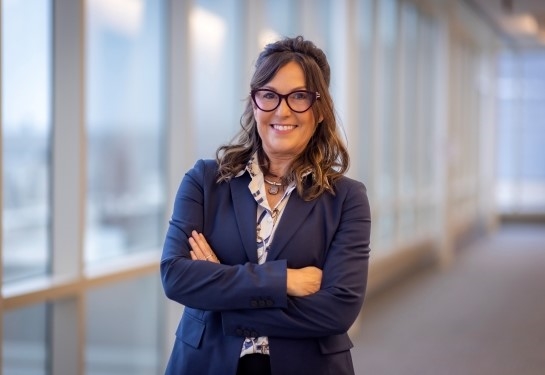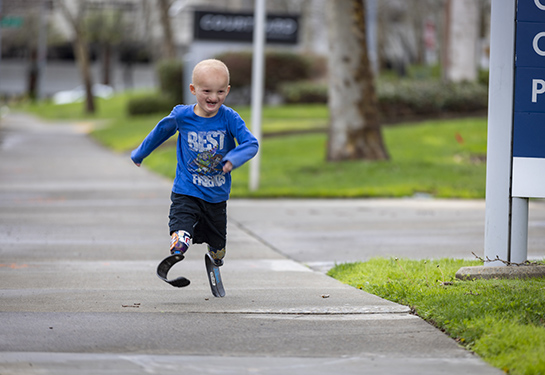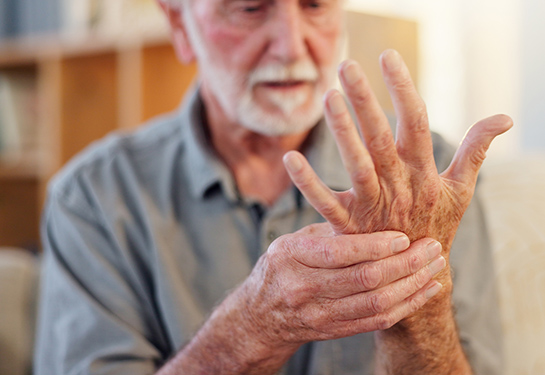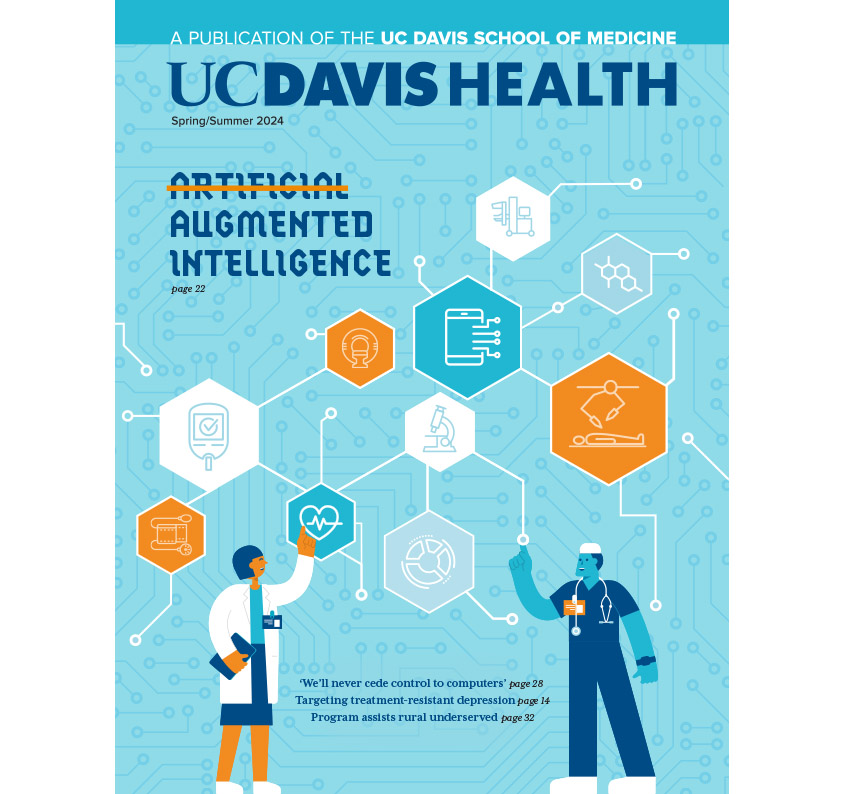Ultrasounds and EKGs: High schoolers get hands-on learning about STEM careers
Partnership with local schools and Project Lead the Way provides learning experiences in anesthesiology
Before Kalina Moore took her Antelope High School students on a field trip to the UC Davis School of Medicine this spring, she taught them about the human heart and cardiopulmonary system.
“The students know the basic structure and function of the heart — how the cardiovascular and respiratory systems work together,” Moore said. “What they don't necessarily know is what an anesthesiologist does, and how an anesthesiologist monitors vitals to help keep a patient alive during a procedure that could potentially be life-threatening without them.”
Moore’s students are part of the school’s Biomedical Pathways program. The program falls under California’s Career Technical Education Standards, which focuses curriculum on different fields, including health sciences and medical technology.
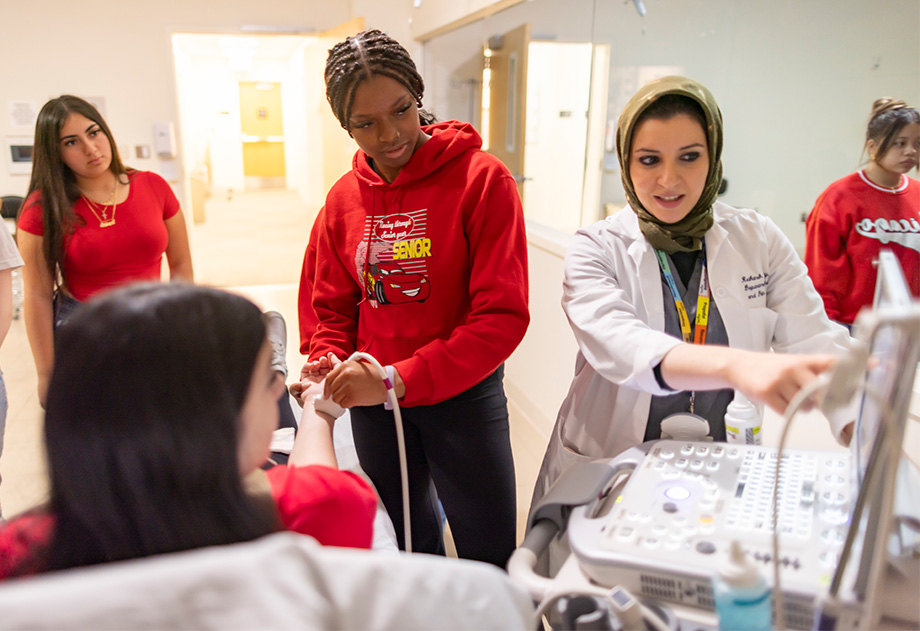
A hands-on experience with the cardiovascular system
The students spent most of their visit in the simulation center at UC Davis Health — a fully functional operating suite used for training. They quickly learned the cardiovascular system is not static. Instead, it is always changing based on underlying health and what the person is doing.
Kevin Nguyen, a third-year clinical anesthesia resident, and Reihaneh Forghany, an assistant clinical professor in the UC Davis Department of Anesthesiology and Pain Medicine, gave the students a demonstration.
Nguyen wore a blood pressure cuff on his arm, electrocardiogram (EKG) leads on his chest and a pulse oximeter on his index finger. A computer monitor behind him displayed his vitals — heart rate, blood oxygen and blood pressure.
He explained to the students around him that the steady “beep-beep-beep” they could hear was his heart rate. The tone represented oxygen saturation. A higher pitch indicated higher blood oxygen levels. A lower pitch meant lower levels.
Blood oxygen, heart rate, temperature and blood pressure are some of the key vitals anesthesiologists monitor during surgery to ensure patient safety.
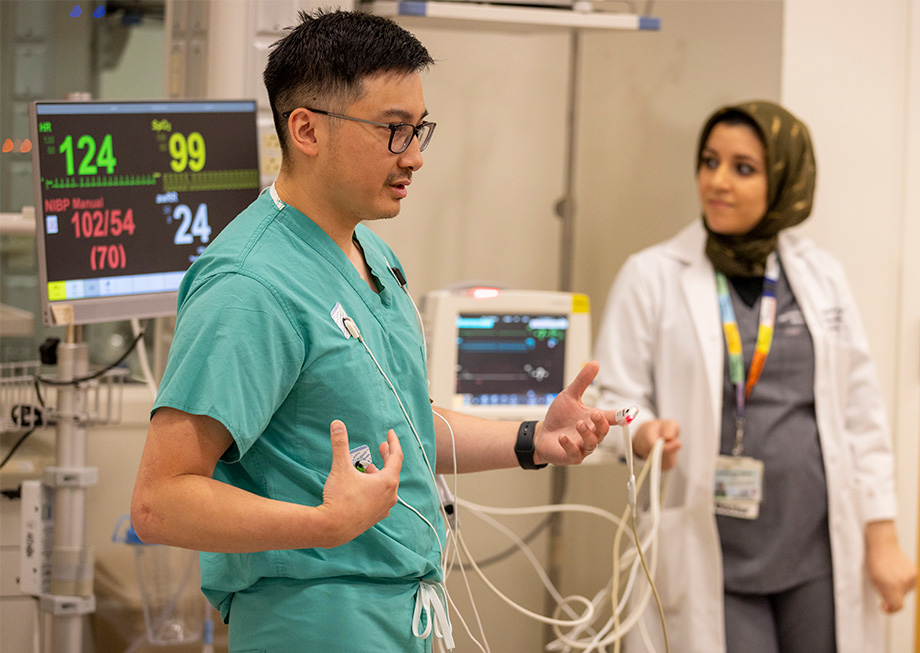
Nguyen took the students through various scenarios. “Let’s say you go on a hike in the woods and you see a bear. What do you think happens to your heart rate?”
“It goes up,” the students answered.
“That’s right. And what do you think happens to your heart rate and blood pressure if you plunge into cold water — do a polar plunge?”
The students were less certain. “They both go up,” Nguyen said. “Cold water constricts the blood vessels, so the heart has to pump harder to keep the blood circulating.”
Screening for a healthy heart
For another lesson, Nguyen lay on a gurney. Amy Chen, an assistant clinical professor of anesthesiology, placed an ultrasound transducer on his chest over his heart. The ultrasound screen showed images of Nguyen's beating heart. Forghany pointed out features that showed Nguyen’s healthy heart activity.
“Once you know normal, you can see abnormal,” Forghany explained to the students.
With the help of the physicians and residents, the students practiced taking blood pressure readings on each other.
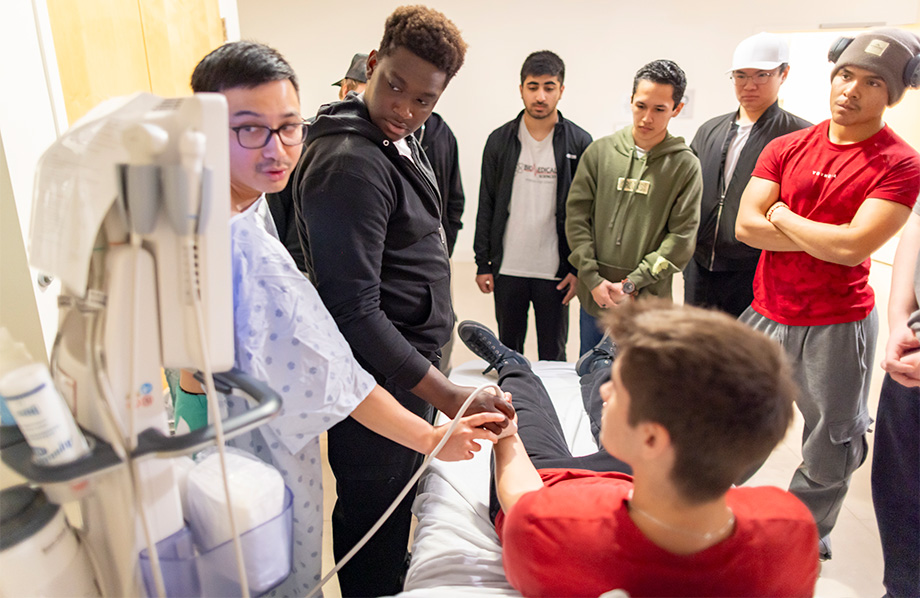
They were also shown how to use a sonogram machine and took turns looking at blood vessels and blood flow in their fellow students’ arteries and veins.
Students of all grade levels at Antelope High School take part in these sessions. According to Moore, they are very popular.
Jennifer Guevarra, a junior, said she liked learning about the ultrasound technology.
“Just being able to see the different veins and arteries was interesting. I didn’t know much about ultrasound technicians, but now it’s something I want to keep in my vision. Because I got more hands-on with it, I’m more interested,” Guevarra said.
Brette Lwabaai, who is also a junior, said he enjoyed learning more about the heart and the EKG.
“I feel like hands-on learning sticks more in your brain. It’s more experiential,” Lwabaai said, smiling.
Partnership with Project Lead the Way
The program launched in 2021. It is a partnership between the UC Davis Department of Anesthesiology, the California Society of Anesthesiologists and Project Lead the Way. The nonprofit helps teachers with curriculums around science, technology, engineering and math, known as STEM.
Three Sacramento area high schools are participating: Antelope High School, Pleasant Grove High School and River City High School.
The students visit the UC Davis Health campus in the spring. In the fall, the anesthesiologists visit the high schools, where the students can practice techniques like intubating mannikins, models of the human body.
“Seeing the sparks light up in students' eyes when they intubate a mannikin for the first time, or hearing the amazement when they see a beating heart on ultrasound is truly inspiring,” said Forghany, the director of the Project Lead the Way program at UC Davis Health.
“I never had such an opportunity in high school, so being able to lead this partnership is truly a unique and fulfilling experience.”
Exposure helps teens discover new career fields
Many high school students feel pressure to figure out their career paths early. But they can only pursue paths that they know about, including those in the STEM fields.
A recent report found 75% of Gen Z youth (which range in age from about 12 to 27) are interested in STEM occupations. However, only 29% list a STEM role as their first-choice career.
Students exposed to four or five technology-related topics in school are more than twice as likely to want a future STEM job, according to the report. They are also more than twice as likely to declare a college STEM major. And they are over five times more likely to be employed in a STEM role than their peers who are exposed to just one technology-related topic or none.
In her career path, Moore started as a pre-med student in college but switched her major to biology and then took an education class at the suggestion of her college counselor.
“That's when my love of science and kiddos came together,” Moore said.
She eventually pursued a master’s degree and teaching credential. She’s now been teaching for 17 years.
“As teachers, we are often searching for ways to bridge both educational and equity gaps,” Moore said. “This partnership helps to do just that. Project Lead the Way provides a hands-on, project-based STEM curriculum for students. Partnering with UC Davis Health offers students real-world experiences, experts, and resources in healthcare and medical fields, enriching their learning.”
Resources


